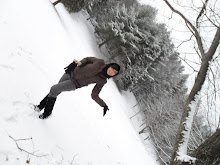 Joseph Mallord William Turner
Joseph Mallord William Turner became known as 'the painter of light', because of his increasing interest in brilliant colours as the main constituent in his landscapes and seascapes. On the other hand,
Roland Emmerich is a German film director, screenwriter, and producer who works mostly in the disaster and action genres. Emmerich directed
Independence Day, an alien invasion feature, released in 1996; next, he directed the American Revolutionary War epic
The Patriot and
The Day After Tomorrow, which is a 2004 American apocalyptic science-fiction film that depicts the catastrophic effects of both global warming and global cooling in a series of extreme weather events that usher in a new Ice Age.
2012 is a 2009 science fiction disaster film based loosely on the 2012 phenomenon.

As well as Turner, who based his pictures in natural disasters, and landscapes of destruction and sadness in the world. Both, they used colours to emphasize the dramatic scene, the predominant basic colors and solid, and the use of reflexes. Turner's first period is marked by mythological and historical scenes in which the coloring is subdued and details and contours are emphasized. Both, also used monuments socially representatives for its emotional value. Currently, Roland uses computer images and animations, applying realistic effects such as reflections in water and wind action on objects, as Turner did in his painting “
The Burning of the Houses of Parliament”, which clearly note the direction of wind and fire intensity. These techniques give a realistic effect that impacts the viewer through their feelings of sadness, fear and helplessness.


 Joseph Mallord William Turner became known as 'the painter of light', because of his increasing interest in brilliant colours as the main constituent in his landscapes and seascapes. On the other hand, Roland Emmerich is a German film director, screenwriter, and producer who works mostly in the disaster and action genres. Emmerich directed Independence Day, an alien invasion feature, released in 1996; next, he directed the American Revolutionary War epic The Patriot and The Day After Tomorrow, which is a 2004 American apocalyptic science-fiction film that depicts the catastrophic effects of both global warming and global cooling in a series of extreme weather events that usher in a new Ice Age. 2012 is a 2009 science fiction disaster film based loosely on the 2012 phenomenon.
Joseph Mallord William Turner became known as 'the painter of light', because of his increasing interest in brilliant colours as the main constituent in his landscapes and seascapes. On the other hand, Roland Emmerich is a German film director, screenwriter, and producer who works mostly in the disaster and action genres. Emmerich directed Independence Day, an alien invasion feature, released in 1996; next, he directed the American Revolutionary War epic The Patriot and The Day After Tomorrow, which is a 2004 American apocalyptic science-fiction film that depicts the catastrophic effects of both global warming and global cooling in a series of extreme weather events that usher in a new Ice Age. 2012 is a 2009 science fiction disaster film based loosely on the 2012 phenomenon. As well as Turner, who based his pictures in natural disasters, and landscapes of destruction and sadness in the world. Both, they used colours to emphasize the dramatic scene, the predominant basic colors and solid, and the use of reflexes. Turner's first period is marked by mythological and historical scenes in which the coloring is subdued and details and contours are emphasized. Both, also used monuments socially representatives for its emotional value. Currently, Roland uses computer images and animations, applying realistic effects such as reflections in water and wind action on objects, as Turner did in his painting “The Burning of the Houses of Parliament”, which clearly note the direction of wind and fire intensity. These techniques give a realistic effect that impacts the viewer through their feelings of sadness, fear and helplessness.
As well as Turner, who based his pictures in natural disasters, and landscapes of destruction and sadness in the world. Both, they used colours to emphasize the dramatic scene, the predominant basic colors and solid, and the use of reflexes. Turner's first period is marked by mythological and historical scenes in which the coloring is subdued and details and contours are emphasized. Both, also used monuments socially representatives for its emotional value. Currently, Roland uses computer images and animations, applying realistic effects such as reflections in water and wind action on objects, as Turner did in his painting “The Burning of the Houses of Parliament”, which clearly note the direction of wind and fire intensity. These techniques give a realistic effect that impacts the viewer through their feelings of sadness, fear and helplessness.



